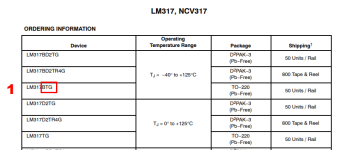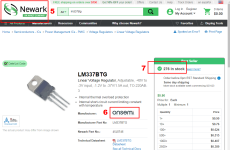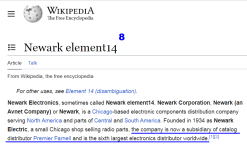In consultation with bhjazz I started a VRDN board group buy for members in the EU. Please see this thread:New possible group buy thread started. Please see this thread:
https://www.diyaudio.com/community/threads/potential-group-buy-for-vrdn-boards.395582/
https://www.diyaudio.com/community/threads/vrdn-boards-group-buy-eu.396196/#post-7278557
The GB will run until March 5th.
I am working on a vrdn power supply for a preamp/front end that I plan to combine with a First Watt F4 to make an integrated amplifier. The F4 will use a diyaudiostore universal power supply and a dual 18v secondary transformer. I’m wondering if there will be any issue with powering both power supplies from the same transformer? The transformer is 400 VA so it should be plenty of current for both.
Any issues I should think about ?
Thanks bmdduck
Any issues I should think about ?
Thanks bmdduck
bmdduck:
Might the preamp you're considering benefit from a different voltage than the 24 VDC the F4 prefers? If so, and if you haven't purchased your toroid yet, and if the vendor offers it, you might consider a custom transformer with two pairs of secondaries (e.g., two high current secondaries for the F4 and two low current secondaries for the preamp). I recently built a B-buffer / Wolverine integrated amp for my parents and Antek was very helpful -- I ended up with a custom 500 VA toroid with 35 VAC secondaries for the Wolverine and a second pair of low current 14 VAC secondaries for the buffer, and the cost was just a few dollars more than a standard toroid.
Regards,
Scott
Might the preamp you're considering benefit from a different voltage than the 24 VDC the F4 prefers? If so, and if you haven't purchased your toroid yet, and if the vendor offers it, you might consider a custom transformer with two pairs of secondaries (e.g., two high current secondaries for the F4 and two low current secondaries for the preamp). I recently built a B-buffer / Wolverine integrated amp for my parents and Antek was very helpful -- I ended up with a custom 500 VA toroid with 35 VAC secondaries for the Wolverine and a second pair of low current 14 VAC secondaries for the buffer, and the cost was just a few dollars more than a standard toroid.
Regards,
Scott
Scott - thanks for the reply. I already have the transformer - from Antek. I thought +\- 18 v into the VRDn might not be optimal but it would work for a +\- 20v output which is fine for the preamp. I’m waiting on the 2022 front end that Nelson pass designed. Not available yet but hopefully soon.
I didn’t know Antek would make a custom transformer. That’s tempting -
I didn’t know Antek would make a custom transformer. That’s tempting -
I'm looking at what existing components I can use.
Would it be a problem for the function of the circuit to replace the electrolytic capacitors C3 - C12, C19/20, C13/14, C17/18 with types with a lower ESR?
Would it be a problem for the function of the circuit to replace the electrolytic capacitors C3 - C12, C19/20, C13/14, C17/18 with types with a lower ESR?
bmdduck - It's generally a good idea to have higher rails on your front end for proper clipping behavior. It just allows you to get full potential out of the output stage. What I mean is.. we don't want the front end to clip before the output stage does, it we can help it. 5 to 10 volts higher rails on the input stage is usually a good target. NP's '22 FE should be able to do +/-30 volts. I wouldn't push that any higher with that circuit.
That's why you see Mark J. put out the FE modules with "boosted rails" for the Sony VFET stuff.
That's why you see Mark J. put out the FE modules with "boosted rails" for the Sony VFET stuff.
The output capacitors need to follow the BOM, or I'm betting you are on your own. The LM3X7 with denoiser is picky on output capacitors. They do not like low ESR capacitors without an added resistor in series.I'm looking at what existing components I can use.
Would it be a problem for the function of the circuit to replace the electrolytic capacitors C3 - C12, C19/20, C13/14, C17/18 with types with a lower ESR?
That's what I thought, then my 2200uF/50V with an ESR of 0.012 are out of the question
With C3 - C12, that's not a problem, is it?
Does this only affect C19/20 (2200uF), or also C13/14 (220uF) and C17/18 (22uF)?
If I want to use my 2200uF/50V with the low ESR on C19/20, do I have to adjust the resistors R21/22, or do the series resistors come between the capacitor and the output?

With C3 - C12, that's not a problem, is it?
Does this only affect C19/20 (2200uF), or also C13/14 (220uF) and C17/18 (22uF)?
If I want to use my 2200uF/50V with the low ESR on C19/20, do I have to adjust the resistors R21/22, or do the series resistors come between the capacitor and the output?
I don't have the schematic in fron of me, but any capacitor before the LM3x7 should be ok with anything you put there. The 220uF and 22uF are not critical, use general purpose caps, it won't affect anything using better caps there. Yes, you would adjust R21/R22, those I believe are between the cap and ground to add resisitance to the cap, to ground. If I remember correctly, the LM317 is the one that is picky about ESR, it likes something between .2 and .5 ESR. The LM337 may work with the low ESR 2200uF caps. If it does not work, it usually needs inductance added to it not resisitance.
Ok. My blank VRDN boards are staring at me today and I can't seem to find the LM317BTG/LM337TG combination anywhere online from a certified onsemi distributor. The actual onsemi parts appear to be out of stock for a few months at this point. Are there suitable LM317/LM337 combinations that work correctly (outside of the TI parts), or should I wait for the prescribed parts named in the BOM?
Cool! Many thanks!
I'll dig through the thread to see if others are building the VRDN, using these parts, with no issues. (The 337 is a TI part.)
I'll dig through the thread to see if others are building the VRDN, using these parts, with no issues. (The 337 is a TI part.)
Last edited:
Have a look at posts # 173, 178, 188, 196, and very especially 198.
Please keep in mind: the purpose of this change is to prevent VRDN from oscillating when the builder uses TI voltage regulator chips . . . . and to allow builders to use regulator chips from either TI or ON Semiconductor. If you've already built a couple of VRDNs using the Rev.A parts list and using ON Semiconductor chips, you don't need to change anything. However if you used the Rev.A parts list and TI voltage regulator chips, you need to make these changes: your board almost certainly will oscillate.
This is the first time I've personally encountered a circuit where vendor-1's implementation of StandardChipXYZ worked well, while vendor-2's implementation of StandardChipXYZ failed badly. It's a surprise and an embarrassment: the De-Noiser is a relatively simple concept, yet it contains hidden pitfalls. I'm cautiously optimistic that this revision sidesteps the oscillation pitfall.
Mark - you saved me from all the digging. Thanks! This is what I suspected, however: that there is no guarantee of performance outside of the original specified parts. I had read your post 198 before, but this time it was very clear.
Since I have other projects to clear out of my queue (and who doesn't?!) I'll put my VRDN build aside until I can get the parts named in the BOM. I don't have an oscilloscope so I feel that, if I did get any oscillation or peculiar anomalies, I might not notice it until it was too late. Yikes.
Since I have other projects to clear out of my queue (and who doesn't?!) I'll put my VRDN build aside until I can get the parts named in the BOM. I don't have an oscilloscope so I feel that, if I did get any oscillation or peculiar anomalies, I might not notice it until it was too late. Yikes.
Several people first noticed "misbehavior" when the DC output voltage, as measured by cheapo DVMs, was wildly different when the "DeNoiser Disable Jumpers" were installed versus uninstalled. So there's reason to be somewhat optimistic that you can mostly tell whether oscillation is present or not, through simple DVM measurements of supposedly-DC voltages. Take a look at all six posts, that's what happened in real life to real VRDN builders in real life.
Of course, Murphy's Law says that what will happen to YOU ... is the worst possible, most misery filled, maximally heartbreaking outcome. But other people really did get a happy result with cheapo measurements.
Of course, Murphy's Law says that what will happen to YOU ... is the worst possible, most misery filled, maximally heartbreaking outcome. But other people really did get a happy result with cheapo measurements.
I now have the VRDN boards to build. But the darn LM317 / 337 stock out everywhere. One of the only legit places that have a very close model in stock is Newark.com They have the LM317BTG and LM337BTG in stock. After reading post #188sh and there after, i question just buying them. Has Mark or any other member tested them for the oscillation issue.
Yes i second that. i have one tooThe ferrules are one of those things I never knew I needed, and now never want to be without. Highly recommended.
View attachment 1134066
- Home
- Amplifiers
- Power Supplies
- VRDN: bipolar regulator PCB for line level ckts: ±11V to ±20V @ 1.5A with "De-Noiser"



